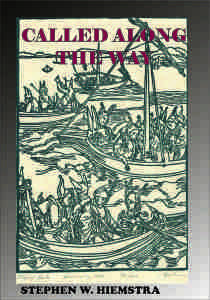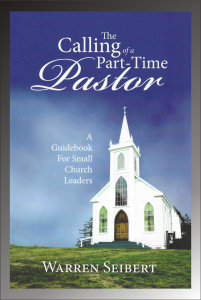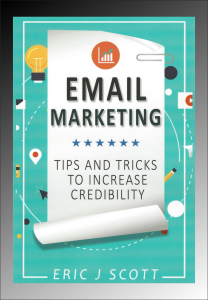Stephen W. Hiemstra's Blog, page 237
November 4, 2016
The Bank Calculator
 “Afterward Moses and Aaron went and said to Pharaoh,
“Afterward Moses and Aaron went and said to Pharaoh,
Thus says the LORD, the God of Israel,
Let my people go, that they may hold a feast
to me in the wilderness.” (Exod 5:1 ESV)
The Bank Calculator
By Stephen W. Hiemstra
My transfer in 1995 to the economics department in the Comptroller of the Currency (OCC) initiated a period of intense learning, productivity, and networking. My particular unit, Global Banking and Financial Analysis (GBFA) developed a relational database in SAS to store and more easily retrieve call report data on commercial banks and thrifts and more generally tasked with financial analysis of community banks. Because most economists have some facility with using SAS, this database enabled our unit to undertake routine oversight of the financial condition of the banks.
My initial work in GBFA involved supporting advanced risk analysis research being undertaken by my colleagues, Tom and Swamy. Swamy developed an econometric approach at the Federal Reserve which was implemented in FORTRAN and ran on the UNIX operating system called the Stochastic Coefficients Estimation Program (SCEP). My task was to migrate this software over to run on Microsoft Windows and to make it accessible to researchers not familiar with FORTRAN. The migration to Windows was fairly straightforward. I then wrote a Windows program in C++ which prompted the user with menus to fill in the required variables and run the FORTRAN as a background process. The harder part was writing the hypertext documentation to explain to users how to understand and user the procedure.
This new program cut the time required to compete an estimation from weeks to a couple hours, making research substantially easier. Tom Lutton and Swamy Paravastu completed a number of journal-quality research papers over the next couple years. Meanwhile, I became acquainted with the procedure and became good friends with mathematician and programmer at American University, Ilok Chang, who had developed the FORTRAN program. Over nights and weekends during the next several years, we collaborated on development of an assembly language implementation of a matrix class for interval mathematics (1996-97).[1] As part of my validation work on this matrix class, I developed a small calculator program to speed up the computations.
In addition to our research work in GBFA, we were encouraged to support the work of the bank examination staff with both macro-economic reporting and financial analysis. For the most part, our macro-economic reporting was ignored, which was a source of much consternation because a monetary crisis was developing in Asia. At one point, we were called upon by a large New York City bank to assist with working on the Asia issue and traveled to New York to brief and be briefed on the issue, but there was little appetite in our office to follow up.[2] When several weeks later the Thai Baht crashed, the attitude about macro-economics did not change and we gave up on our reporting.
The support for financial analysis was different, in part, because everyone was convinced that they could do themselves, even if inadequately. The breakout project in financial analysis came when we were asked a second time to assist in reviewing liquidity risk. Liquidity risk kept coming up because there was an examiner with a special interest in liquidity issues who would periodically worry people enough to have management request an assessment. The first time this happened, we undertook a lengthy literature review and attempted to measure liquidity risk with a research effort—no one understood our work and it was dropped. The second time we received a request, I proposed a brief study of the liquidity ratings given by examiners to each and every national bank.[3] With our new data system, this study was easily undertaken, briefly summarized, and widely cited. This liquidity study was ignored by the economics staff, but was loved by management so we found ourselves fielding more questions about the financial condition of national banks.
Because of my background in agricultural economics and bank examination, I found myself undertaking quarterly studies of the condition of agricultural banks. In response to this requests, I developed a databook of all the agricultural indicators found in the call reports. This databook was warmly received and I was invited to participate in an agricultural oversight committee which met from time to time with examiners from across the OCC. Eventually, I was able to convince OCC managers that, unlike in the 1980s, agricultural banking no longer posed a systemic threat to the national banking system and routine reporting on agricultural banks went from quarterly to annually and then to being dropped. The largest agricultural portfolio in the nation was held by the largest bank, but for that bank it was less than one percent of assets—in other words, agricultural credit risks were being adequately managed.
Between our research work on bank risk taking and our reporting on the financial condition of banks, it became obvious that economic research seldom had an impact on the culture of regulation while financial analysis, even if indefensible in an empirical sense, was routinely influencing administrative decisions. This problem caused our team great consternation, because we believed that our work was both theoretically and empirically sound. In the midst of this frustration, I began to see a disconnect between the contractual risks (credit and interest rate risk, in particular) which regulators followed with great interest and threats to the firms’ survival (liquidity and failure risk) which were often neglected. I coined the term, whole bank risk, to highlight this disconnect.[4] Tom, Swamy, and I began to call ourselves the whole bank risk team.
The whole bank risk project had two primary components, one headed by Swamy and other I headed. My project involved improvements to a bank failure model which we developed in cooperation with the Federal Deposit Insurance Corporation (FDIC) and the Office of Management and Budget (OMB) using Swamy’s econometric approach. This initial failure model yielded a probability of failure which tracked the historical performance of commercial bank failures reasonably well, but the number was lower than FDIC was accustomed to seeing and they rejected the model. The model was accordingly written up and then ignored.
Later on, GFBA was tasked with developing new models for the OCC. A week-long series of meetings were planned in which staff unfamiliar with modeling sat and talked for days about how to develop models. This was extremely frustrating for those of us accustomed to modeling and being ignored. At that point, I had an idea—why not take our existing bank failure model and develop it into a Windows program which allowed the user to simulate bank failure probabilities in a calculator format, as I had done earlier with my interval mathematics validation? I skipped out of the meeting on Monday and returned on Wednesday to demonstrate my “Bank Failure Calculator” program.
The name changed to “Bank Calculator” to placate sensitivities, but the program itself was a great hit. Over the next 7 years, I spent about half my time estimating new failure models to add additional explanatory variables, validating the results, doing supporting studies, and porting the program to other computing environments, like SAS, Excel, and hypertext. I also gave demonstrations to numerous agencies across government interested in our approach. In its hay-day, the bank failure probabilities were updated for every bank in the national system and available along with supporting analysis to examiners across the OCC through the agency intranet.
[1] We envisioned this project accelerating the Human Genome project computations (https://www.genome.gov/12011239). However, in my validation work I discovered a weakness in the Pentium processor which would have required years of effort to resolve. At that point, we abandoned the project.
[2] Frustrated by the response but intrigued by the developing storm, I opened a commodity account and taught myself options trading and technical analysis nights and weekends.
[3] Bank examiners rate banks with 5 indicators each year: capital, assets, management, equity, and liquidity (CAMEL).
[4] Other people talk about enterprise risk.


November 1, 2016
Seibert Clarifies The Ups and Downs of Part-Time Ministry
 Warren Seibert. 2016. The Calling of a Part-Time Pastor: A Guidebook for Small Church Leaders. Bloomington: Westbow Press.
Warren Seibert. 2016. The Calling of a Part-Time Pastor: A Guidebook for Small Church Leaders. Bloomington: Westbow Press.
Review by Stephen W. Hiemstra
It is interesting how the watering down of religious commitment has affected our notions of a healthy church. In the rabbinic tradition, a rabbi could hold worship with no less than a minyan (10 adult males) which meant that, if the congregants kept the tithe (a tenth of their income), the rabbi could maintain a living standard consistent with his minyan. In the U.S. today, where average giving is more like 1 percent of income, a church needs about 100 members to support a pastor. Because already about 2/3 of the Protestants churches in North America have less than 100 members (xiii) and about 30 percent of the pastors already part-time (xvi), the loss of millennial and builder generation members can only increase the financial pressure to call part-time pastors (11).
In his book, The Call of a Part-Time Pastor, Warren Seibert writes:
“The only thing that is really ‘part-time’ or partial about my ministry position is that amount of financial compensation that my church is able to provide at this time. This is why I prefer the term ‘bivocational’ to describe my life and service…Simply defined, a bivocational pastor is someone serving in a ministry setting who must rely upon an additional source of income outside their ministry in order to support themselves or their family” (xviii).
“the truth is that part-time pastors are not a new phenomenon at all…a careful study of church history demonstrates that what is actually ‘new’ in the church is full-time clergy.” (5)
The Apostle Paul, for example, worked as a tentmaker; Chrysostom was a farmer; Dionysius was a physician (4-5). Seibert offers many examples in support of his thesis, which is that part-time pastors are the norm, not the exception, even today.
Warren Seibert is himself a bivocational pastor ordained by the Reformed Church in America, who also works as a registered nurse. He divides his book into three parts:
The World of Part-Time Ministry,
The World of the Part-Time Church, and
A Partnership in Full-Time Ministry (xi).
Let me address each in turn.
The World of Part-Time Ministry. Many Christians and many pastors have negative attitudes about small churches and part-time pastors. Why? (12) Denomination groups, for example, often perpetuate these attitudes both by setting minimum salary requirements above what small churches can pay and refusing to ordain candidates for ministry who do not have paid ministry positions, forcing them, in effect, to take volunteer positions that many cannot afford.
Seibert sees the small church as the contemporary mission field (13) where the pastor is called to full-time ministry, just like every other Christian (23). He divides this call into three parts: a call to salvation, a call to sanctification, and a call to service (26). This last call, the call to service, distinguishes the pastor from other Christians, because each has a call to service, but not all of us are called to pastor (35). In the reformed tradition, the call to service is referred to as the “priesthood of all believers” (30) and it is not simply a task delegated to the pastor. Ministry can never be delegated to the pastor because there is “simply too much work to do” (38).
The World of the Part-Time Church. What is a church? In the New Testament Greek, the church (ekklesian; ἐκκλησίαν Matt 16:18) is referred to as the called out ones (43). The ones called out are called out by Jesus himself. Therefore, Seibert clarifies, saying: “The church is a gathering of people who profess that Jesus is their Lord and Savior.” (44) The many voices that we hear today that compete for the time, energy, and resources of the church, he suggests, need to be subordinated to the authority of Christ (45) who calls his church to make disciples by means of going, baptizing, and teaching (49). The four fundamental tasks in making disciples, he suggests, are: worship, discipleship, fellowship, and evangelism (51).
A Partnership in Full-Time Ministry. Unrealistic expectations by churches and by pastors, especially unspoken and assumed expectations, hamper many part-time pastors (71). One colleague close to me, for example, who was hired after the retirement of beloved pastor responded to an expressed desire to recruit new members only to find that the new members that he recruited were not the ones actually desired. Not meeting the unexpected desire, he found himself seeking a new position about three years later.
Seibert offers lists of expectations that the church should have of a part-time pastor and what the part-time pastor should expect of the church. The church should expect:
A person of strong character, a call to bivocational ministry who believes and preaches the Word of God, is a person of prayer, loves the people, provides pastoral care, leadership, and training, and agrees with the duties and expectations of the ministry (73-76).
The pastor should expect:
A church that prays for their pastor, accepts their pastor’s leadership, cares for the pastor and family, holds realistic expectations, ministers alongside the pastor, understands the limits of part-time work, and supports the ministry with attendance, giving, and salary (76-79).
Seibert observes that Gospel ministry is not easy, but it is also not complicated (81).
Warren Seibert’s The Calling of a Part-Time Pastor is a helpful guide for small church leadership. It is short, understandable, and readable.
The definition of a minyan is only hinted at in the Old Testament. Moses and Jethro, for example, talk about leaders of tens, fifties, hundreds, and thousands: “Moses chose able men out of all Israel and made them heads over the people, chiefs of thousands, of hundreds, of fifties, and of tens.” (Exod 18:25 ESV; https://en.wikipedia.org/wiki/Minyan ). In Numbers 14, Moses refers to the 10 spies who grumbled about entering the Promised Land, as a: “wicked congregation”. The tithe is more concretely defined (e.g. Lev 27:30-32).
October 30, 2016
Prayer When Daylight Fades

Art by Stephen W. Hiemstra
God of the day and the night,
Oh Lord, God of my youth when days were long and nights were short,
be especially near now as twilight approaches and I feel all alone.
Remind me of the times we shared, the beaches we walked, and the forests we explored,
when each discovery was a blessing to share with you and with those near me,
when hope was founded on the newest of life and your constant companionship,
and I did not know how to fear or what to fear or when to fear,
because everything was fresh and new and bright
and my candy bag was bigger than me and I could wear any costume with equal glee.
Oh Lord, God of my elder days as nights grow longer and the days seem to slip by,
be especially near as twilight sneaks up on me and feel less energetic.
Guard my heart in my weaker moments and bless me with your wisdom,
when my own wisdom seems shallow and my need ever so great.
Remind me that we still share time together
and that the freshness of our time is more than the newness of youth.
In the power of your Holy Spirit,
grant me strong hands to support me when my own hands fail
and the strength to carry your light though the darkness seems all too near.
In Jesus’ name, Amen.


October 28, 2016
Late One Night
whom the master finds awake
when he comes.” (Luke 12:37)
Late One Night
By Stephen W. Hiemstra
The day my son, Stephen Reza, was born, August 19, 1992, I was scheduled to give a nationwide, video presentation at the Farm Credit Administration (FCA). It was an important speech, in part, because I had been RIFed (reduction in force) two months prior and my job was on the line. Maryam knew the position I was in that day so I drove her to the Inova Fairfax hospital, got her checked in, and kissed her goodbye as I left to give my presentation, as my office was only about three miles down the road from the hospital.
My office was surprised to hear my situation; I was allowed to give my presentation without delay; and I returned to hospital. As a dutiful wife, Maryam, waited for me and, when I arrived, we went immediately into the delivery room. Stephen Reza was born without mishap and, to my horror, he began life by pissing all over the doctor’s face. The doctor, who had delivered all three of my kids, did not complain. He just took off his glasses, wiped off his face, and continued his inspection of the placenta and umbilical cord. When I asked him what he was looking for, he responded saying that placenta and umbilical cord provide insights into some forms of birth defects that are otherwise hidden.
The days went by quickly that fall. Having been assigned to the McLean examination team, I was on the road from Monday morning to Thursday evening, normally assisting with association examinations in rural Virginia. Because I was gone half the week and following the custom in Iran, Maryam kept Reza’s crib in the our bedroom, making late night feedings easier. When Reza went into convulsions on that Friday evening in October, we woke up and called 911.
The emergency medical team (EMT) arrived promptly and took Reza’s vital signs. Nothing seemed out of the ordinary, but Maryam insisted that the EMTs transport him to Fair Oaks Hospital. Lab work was taken and his blood chemistry was all messed up with no indication of why. Early Saturday morning he was transported to Inova Fairfax Hospital which has a pediatric intensive care unit where he stayed until Sunday afternoon. At that point, the attending physician noticed that his urine bag was empty and ordered a sonogram. The sonogram showed that Reza was born with only one kidney and the duct off of his existing kidney had folded over on itself. Emergency surgery was required to relieve the buildup of urine so he was transported to Georgetown University Hospital and scheduled for surgery late Sunday night.
Sunday evening Maryam and I found ourselves exhausted from lack of sleep and nearly hysterical from all the uncertainty and stressful events. At one point I found myself alone with Reza in his hospital room. His labored breathing was the only sound to be heard. On my knees and beside myself with grief, I offered myself in prayer for my son’s life: “Lord, do not take him, take me.” About ten years later, I was reminded of my prayer and began to consider seminary.
Pastor Rob stopped by to offer comfort later that night as we waited for the surgeons to complete their work. We were otherwise alone because my parents were living in Indiana at the time and few others were around to offer comfort. In the surgery, the surgeons inserted a catheter into his kidney duct to drain the urine, but opted not to perform surgery—at ten-week of age he was simply too small. The catheter was invasive enough.
We had enough on our minds because after surgery Reza screamed all night. Because of the problems of estimating drug dosage on a young child, the standard medical practice is not to offer pain medication to infants. Similarly, three months later in January, we came back to have the catheter removed and corrective surgery was performed—again, we watched helplessly afterwards while Reza screamed. Screaming: I mostly remember the endless hours of screaming.
Monday morning I drove to an association examination in Norfolk Virginia. When my office learned later that morning what I was dealing with at home, they called me back to the McLean office for a period of weeks when I was graciously reassigned to a research project so that I would be closer to home.


October 25, 2016
Lotz: A Poetic Commentary on John’s Gospel
 Anne Graham Lotz.2000. Just Give Me Jesus. Nashville: Word Publishing.
Anne Graham Lotz.2000. Just Give Me Jesus. Nashville: Word Publishing.
Review by Stephen W. Hiemstra
Some stories bear repeating. One story that I have repeated over the years concerned a dinner party where Ruth Graham learned that an older gentleman sitting next to her was the former head of Scotland Yard, the British equivalent of the FBI. Because part of his responsibilities included dealing with counterfeit money, she remarked that he must have spent a lot of time examining counterfeit bills.
“On the contrary, Mrs. Graham, I spent all of my time studying the genuine thing. That way, when I saw a counterfeit, I would immediately detect it.” (3)
The punch line here is that the best apologetic for the Gospel is Jesus himself. After repeating this story over and over, I felt guilty and decided to buy the book where it appears, Anne Graham Lotz’ Just Give Me Jesus.
Anne Graham Lotz is an author, evangelist, and the founder of AnGel Ministries in Raleigh, North Carolina. She is also the daughter of Ruth and Billy Graham. According to her website, “The New York Times named Anne one of the five most influential evangelists of her generation.”
Interestingly, in spite of her obvious talents and family notoriety, Ms Lotz writes with reference to 1 Timothy 2:11-12:
“I believe He [God] has forbidden me to teach or preach from a position of authority over a man…So when I speak, I speak as a woman who is not in authority. Instead, I am a woman who is under authority.” (311)
The term, “under authority”, is a quote from the faithful Centurion, whose slave Jesus healed. This same humility led the Apostle Paul to describe himself numerous times (like Moses) as a slave (δοῦλος) of Christ (e.g. Romans 1:1). Placing herself under authority of Christ means that Ms. Lotz has clearly read her Bible and is above other things an evangelist. Why do I say this? Because her first priority is the Gospel, which she wants to be heard by both women and men. If she ignored or abrogated 1 Tim 2:11-12, as many do today, some men could not hear her words, distracting them from her evangelism.
In reading Lotz’ book, Just Give Me Jesus, I was pleasantly surprised to learn that it is a commentary on the Gospel of John. Lotz’ poetic style steps aside many of the scholarly interests of academic commentators, but she does not tell us directly why she chose John’s Gospel. Instead, she writes:
“While John’s motivation for writing his eyewitness account of the life of Jesus was his overwhelming, passionate love for Christ, his purpose in writing was his love for you. The desire of his heart was, “that you may believe that Jesus is the Christ, the Son of God, and that by believing you may have life in his name.” (ix)
If one takes on the mind of Christ as an evangelist, then one must take the words of Jesus seriously when he says: “Blessed are those who hunger and thirst for righteousness” (Matt 5:6 ESV) and the salvation of sinners. John’s passion is contagious.
Lotz’ own poetic style is striking and pervasively utilized throughout the book. For example, in discussing the Jesus’ conversation with the paralytic in John 5:6, she turns to the reader and asks:
“Do you want to get well? Do you truly want that sin to be cleansed?
that guilt to be removed?
that habit to be broken?
that anger to be dissolved?
that bitterness to be uprooted?
that emptiness to be filled?
that joy to be reconciled?
that relationship to be restored?
that strength to pick up your responsibilities and start walking by faith? (122)
While some might take Lotz’ poetry to be simply a stylistic device, it serves an important hermeneutical purpose. Lotz’ poetic style serves her well in both offering a “biblical theological” exegesis and “speaking to everyone in the room.” Following Calvin, biblical theology strives to exegete (a scholarly term meaning to explain) a biblical passage taking into account the entire counsel of scripture, starting with the author’s intent. Scripture should explain scripture; if the author’s intent is unclear, then perhaps another passage of the Bible is clearer. By contrast, “speaking to everyone in the room” is a popular preaching style that strives to understand the perspective of different classes of people or, hermeneutically, how different readers might interpret a particular scripture passage. Lotz’ poetic style allows her a sophisticated exegesis that permits her to explore the three most important hermeneutical perspectives: author’s intent, the canon of scripture, and the reader.
A lot more could be said about Lotz’ poetry. It is neither a mere style nor a strictly feminine approach. If one slows down and examines it carefully, it communicates a clear, deep, and diverse perspective. The potential for Lotz to live up to the New York Times claim (cited above) about her influence is clearly present.
In general, the voluminous nature of a commentary makes it hard to review adequately. Let me just say that Anne Graham Lotz’ Just Give Me Jesus is a delightful book to read and ponder. Already this week as I finished the book I have found myself repeating other stories (in addition to the Ruth Graham story above) that she has told. I suspect that you will too.
http://www.annegrahamlotz.org.
“Let a woman learn quietly with all submissiveness. I do not permit a woman to teach or to exercise authority over a man; rather, she is to remain quiet.” (1 Tim 2:11-12 ESV)
“But the centurion replied, “Lord, I am not worthy to have you come under my roof, but only say the word, and my servant will be healed. For I too am a man under authority, with soldiers under me. And I say to one, ‘Go,’ and he goes, and to another, ‘Come,’ and he comes, and to my servant, ‘Do this,’ and he does it.” When Jesus heard this, he marveled and said to those who followed him, “Truly, I tell you, with no one in Israel have I found such faith.” (Matt 8:8-10 ESV)
יְהוָ֑ה עֶ֣בֶד (Jos 1:1 WTT). The Hebrew reads: slave of God (YHWH).
La Promoción con Kindle Termina esta Semana

Compra (pulsa aquí)
Más información (pulse aquí)

Compra (pulsa aquí)
Más información (pulse aquí)
Ahora tenemos una “Publica Con Kindle Promoción” que termina el próximo 31 de octubre.
T2Pneuma Publishers LLC tiene dos libros que participa en esta promoción:
Una Guia Cristiana a la Espiritualidad ($4.95)
Oraciones ($0.99)
Vea T2Pneuma.com para más información sobre estos títulos o para más información sobre esta promoción (pulsa aquí).
Kindle has an online promotion until October 31, 2016 for titles in Spanish.


October 23, 2016
Prayer for Comfort for Those Alone

Photo by Stephen W. Hiemstra
Blessed Lord Jesus,
Comfort those who are alone:
alone with their grief,
alone in their pain,
alone with their anguish,
alone in their poverty,
alone with memories of years past and no one to share them with.
Thank you for the example of someone who cared about lonely people.
Be especially present in the lives of those who are alone today.
Bring new voices, new faces, and helping hands into their lives.
In the power of your Holy Spirit, open our hearts to those around us.
That we might truly be sons and daughters of one father.
In your name we pray, amen.


October 21, 2016
Land of BOS
I am the LORD your God, 
who brought you out of the land of Egypt,
out of the house of slavery.
You shall have no other gods before me.
(Exod 20:2-3)
Land of BOS
By Stephen W. Hiemstra
In January 1993, I applied for a position in the Comptroller of the Currency (OCC) which was the office in the U.S. Department of Treasury responsible for national bank supervision.[1] This particular office was called the office of Bank Organization and Structure (BOS) and it oversaw national bank applications for organizational changes (licensing), like new bank charters, conversions from state to national charter, mergers, failures, and opening of new automated teller machines (ATMs). I had a rough idea of BOS’ business function from my work in bank examination in the Farm Credit Administration (FCA), but it did not matter to me. They needed a financial economist and I wanted to get back into economics. My work on the McLean Team in FCA in examinations required more travel than was consistent with my family situation—my son had had surgery the previous October and required follow up surgery in January.
The interview process for this position went quickly. I met with my supervisor and, after that, my second level supervisor took me to lunch. They were pleased to have an economist, like myself, with experience both with computers and with working in examinations. My position involved financial reporting based on a customized licensing database—a network database which required queries in the structured query language (SQL) and the ability to read a data schema. Only one other member of the staff was able to request data from the system and she was not an economist able to interpret the data. Missing from my interview was an opportunity to visit with the staff.
The lack of staff input into the hiring process should have been a red flag. In prior interviews in the Economic Research Service, in USDA, for example, an interviewee might be required to visit with the review committee, managers, and each member of the staff, and to make a presentation to the entire department. This sort of intense vetting process was also typical for many firms and academic departments that hire economists, in part, because of the extensive need for team work. However, FCA also did not require this type of extensive interview so I was off my guard in interviewing at OCC. In fact, I was relieved not to have to deal with a lengthy process, in part, because of the stress at home with my son’s medical situation and having two other kids in diapers.
I started work late in January. The office seemed congenial enough because both my supervisor and his boss were both economists. My opinion was frequently asked in staff meetings and all seemed copacetic as I learned my new position. But everything was not as it seemed.
In early February, my supervisor announced that he was leaving. He was quickly replaced with a professional OCC manager who was not an economist and was new to the group. The staff was icy cold in their interactions with me because my departing boss had brow-beat them for years complaining about their lack of analytical skills. When I was hired and brought those skills to the group, their silent resentment was given a concrete focus—me. The new manager picked up immediately on the staff resentment and offered me no shelter from the storm. I was alone in the group and persona non grata. My new station in life became even more conspicuous when the office was invited to a dinner party at the old supervisor’s home and I found myself there with my wife, Maryam, and shunned the entire evening. Maryam picked up on the tension that evening and came away distraught knowing, as a stay-at-home mom, that our entire livelihood was in jeopardy with nowhere to run. The darkness in my life grew darker still when soon thereafter Maryam was diagnosed with breast cancer.
The emotions associated with breast cancer pillage both husband and wife, but the sympathy and care extended focuses on the wife. Most people close to you offer sympathy and assistance for a few weeks, but after that you are on your own. Others close to you shut down emotionally and withdraw having no reserve to draw on to lend to you. Maryam quickly went through a lumpectomy with radiation and was put on a hormonal treatment tamoxifen. I felt shamed and abused by doctors examining and diagnosing my young wife with no outward appearance of disease and by being robbed of the prospect of having more children. While I did not miss a day of work, at one point I had a bad day in the office only to find my boss threatening to fire me—these were cold, hard days.
Still, I had an unexpected ally at OCC from early in my tenure. The Comptroller of the Currency distinguished himself as being a lawyer who was computer literate and brought a laptop to meetings. This created a big stir in an agency that prided itself on teaching bank examination conducted with nothing other than a legal pad. One morning I helped a man with a brief case and a laptop to get on the elevator. Seeing the laptop, I knew immediately who it was, pushed the button to the top floor, and introduced myself to Eugene Ludwig, the Comptroller of the Currency, for the first time.
After the Comptroller of the Currency himself, I was the second one in the building (in an agency of about three thousand) to request and receive a 486 desktop computer. My computer skills became well-enough known in the office that my second level supervisor asked me to upgrade him to Windows 3.1, while the computer support personnel remained in the MS DOS world, even though new computers came with Windows installed (they un-installed it). This embarrassed them enough that they refused to offer me any technical support. When I requested additional computer memory, they simply dropped the memory cards on my desk and walked away. I ended up loading my own copy of MS Office on my office computer, in part, because the computer support simply refused my request.
Nevertheless, my computer skills continued to open doors. At one point, my second-level supervisor was tasked with organizing a fundamental re-organization of the OCC from top to bottom. Being a pariah in the office, I volunteered to assist with this re-organization and quickly found myself assisting teams from across OCC in process-mapping their business functions. Over the next several months, I constructed roughly 150 process maps covering every single business activity deemed important and worked closely with the rising stars in the agency who would soon form the new senior management structure. Because of these insights and connections, I was soon offered a transfer to the economics department to work for a very ambitious female manager with a data management background and a need for programmers who were comfortable building financial models.
According to Shakespeare, all’s well that ends well. Yet, the scars of those days remain. Maryam cannot shake the memory of family members who remained aloof during her breast cancer episode; I buried myself in my work and, when I was not working, I was adding to my programming skills. After learning Windows programming in C, I went on to become expert in C++, FORTRAN, and assembly. My programming skills gave me the prospect of earning more money as a programmer than as an economist, but I stuck to building financial models where I increasingly became known as a financial engineer.
[1] A national bank is a bank with a federal charter and identified by having a name including the term, national bank or national association (NA). Banks are financial institutions that take deposits and make loans.


Publica Con Kindle Promoción

Compra (pulsa aquí)
Más información (pulse aquí)

Compra (pulsa aquí)
Más información (pulse aquí)
Ahora tenemos una “Publica Con Kindle Promoción” que termina el próximo 31 de octubre.
T2Pneuma Publishers LLC tiene dos libros que participa en esta promoción:
Una Guia Cristiana a la Espiritualidad ($4.95)
Oraciones ($0.99)
Para más información, vista: http://bit.ly/PublicaConKindle.


October 18, 2016
Scott Writes Pro Email Newsletters
 Eric J. Scott. 2016. Email Marketing: Tips and Tricks to Increase Credibility. CreateSpace Independent Publishing Platform.
Eric J. Scott. 2016. Email Marketing: Tips and Tricks to Increase Credibility. CreateSpace Independent Publishing Platform.
Review by Stephen W. Hiemstra
The first widely circulated, bound book (a codex) was the Greek New Testament; the first major, printed book (circa 1455 AD) was the Guttenberg Bible. In both instances, Christians were early adopters of new technologies and used them to advance their evangelism. For example, the codex was important to missionaries because it was easier to transport than a scroll; the Guttenberg Bible was a priority for protestant reformers because Bible was considered to be the sole authority for the church’s teaching. In today’s environment it is therefore not surprising to see evangelists and churches being quick to exploit email and other social media in promoting the Gospel. But, how is that best done?
In his book, Email Marketing, Eric Scott observes these business values as helping establish credibility in email marketing:
“Precipitate positive change in the world.
Resolve all types of issues…
Be a moral agency.
Generate enthusiasm in employees and clients.
Make things happen. Have a positive outlook…” (2-3)
Supporting these values are internet standards like:
“Customer service—how you treat your clients.
Transactions—the amount of time purchases take or the way they are handled.
Handling of currency—the protocol you follow in case of theft, where you store money, and who is allowed to handle the money.
Client demands—the requests of your customers.
Marketing—the way you advertise your company.
Organizational tasks…” (3)
The drift in all of this is that in an environment where time is precious and expectations are high, many details are involved in establishing the trust of customers. Scott observes: “People these days see everything as black and white. You are either trustworthy or not.” (4) Today’s readers are a tough crowd to please.
Although I have had an email newsletter since my early seminary days (circle 2009), I never really understood how to use the medium properly. When I graduated in 2013, I had three separate lists of supporters who I would write periodically which I merged into a common list and started using MailChimp to manage each month. I established a blog (T2Pneuma.net) with the hope that my email readers would migrate to it, but really few did. Email remains more familiar to people and, because they resisted migrating to the blog, I got into the habit of writing both a monthly newsletter and the blog. Only in the past couple months did I come to realize that I needed to focus more on the newsletter and treat it as central to reaching my most dedicated readers. This realization led me to Scott’s book, which focuses on email marketing.
Scott’s tips are priceless and it is helpful to think of the book as posing a conversation with you about your email practices. For example, Scott writes: “In your welcome email, make sure you have an about you.” (20) I certainly did not have an “about you” in my welcome email (which I crafted only last week), in part, because I have always written to an audience of friends and family who obviously know me. As I encourage other readers that I do not know me personally to read my newsletter, it is helpful to insert this “about you”, even if ever so brief. In some sense, Scott’s book substitutes for the lack of a consultant able to tell me such things.
Some of my email hang ups arise because my identity as an author is changing. As I have upgraded my internet presence to reflect a “professional author” persona, attitudes about merchandising need to be amended. For example, my newsletter (and my publisher Facebook account) now sport buttons encouraging readers to purchase my books, which Scott certainly encourages (21). However, surprisingly he cautions the newsletter writer to focus on being a friend (24). Friends are helpful; friends are truthful; friends are, in a word, friendly. (25-27) This advice transfers across technologies. Other authors encourage online entrepreneurs to be social on social media, rather than treat social media like another advertising forum.
Scott’s tips are in many ways confirmation of many of the practices that I have evolved myself over the past few years. For example, he cites the “90/10 rule” which reads that 90 percent of your content should be helpful advice and other things while only 10 percent should consist of sales pitches (36). This rule is, in effect, an application of the social part of social media.
Eric Scott’s Email Marketing is a helpful book. The focus on building credibility with your audience is actually critical when you consider how easy it is to unsubscribe from a newsletter—reminders are help. Scott’s book is short and easy to read, but don’t discount its content. Newsletter writers will want to take a look.
https://en.wikipedia.org/wiki/Codex









